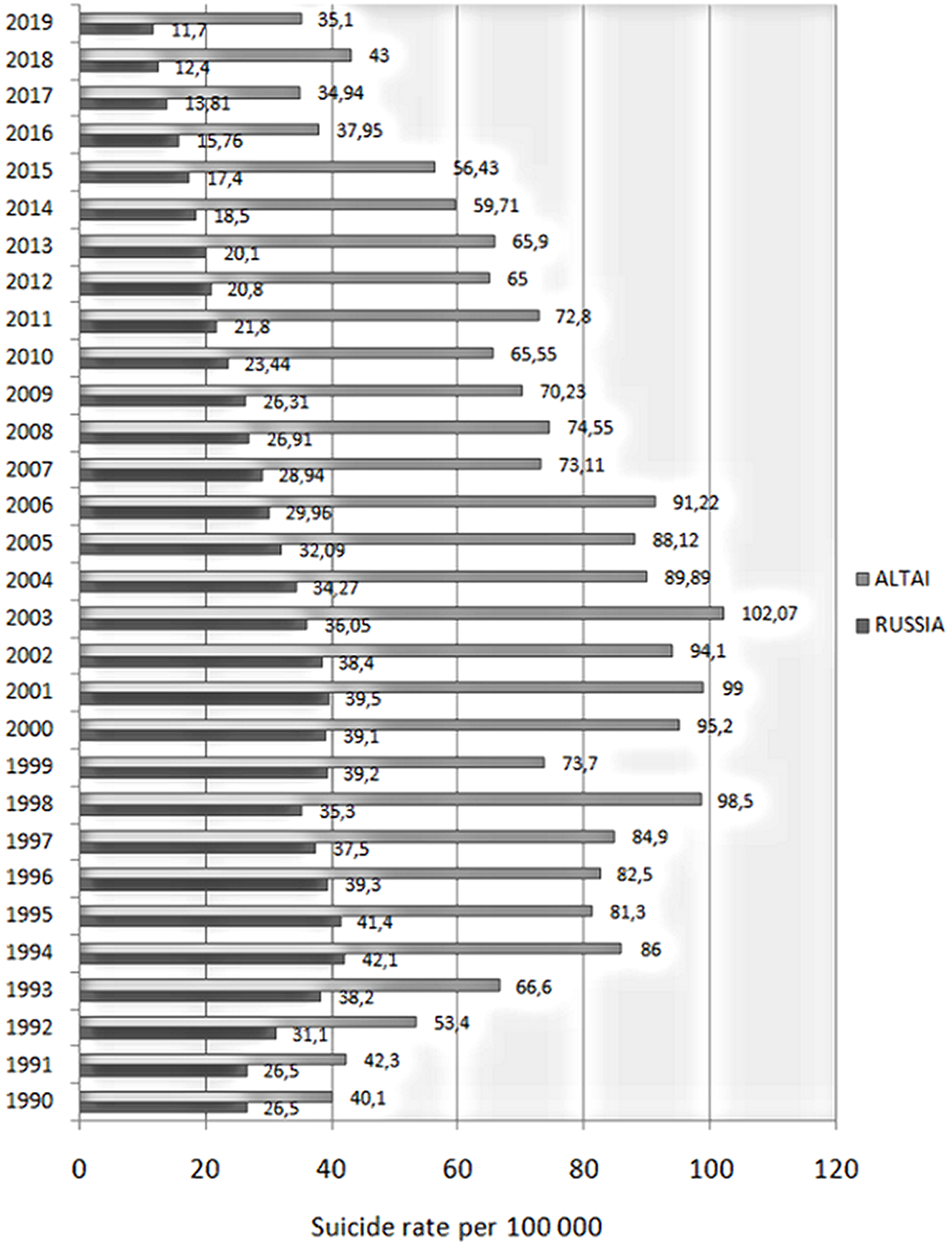No CrossRef data available.
Article contents
Analysis of mortality from suicide in the Altai Republic, Russia, for the period of 1990-2019
Published online by Cambridge University Press: 01 September 2022
Abstract
The Altai Republic (AR) is a national republic of the Russian Federation (RF), where the indigenous people – Altaians live, and where a high death rate from suicide is recorded.
To analyze the dynamics of mortality from suicide in the AR for the period from 1990 to 2019.
Data on mortality of the population were obtained from the Russian databases of demographic indicators. The data were analyzed in terms of indicators standardized per 100,000 population.
In the AR, as well as in the RF as a whole, there has been an increase in the level of suicide since 1990, but in Altai it lasted for a longer period of time – for 13 years. Throughout the entire period, the suicide rates in the AR have consistently exceeded the all-Russian indicators by 1.5-3 times, and by 2019 the gap in indicators has doubled compared to 1990. The curve of mortality from suicide in the AR has a fluctuating character with spontaneous peaks, in contrast to the curve in the RF that has the form of a “plateau”.

In the AR, the mortality rate from suicide consistently exceeds the all-Russian indicators, by 2019 the gap in indicators has doubled. The mortality curve is fluctuating, which we associate with clustering of suicides. This phenomenon requires further study.
No significant relationships.
- Type
- Abstract
- Information
- European Psychiatry , Volume 65 , Special Issue S1: Abstracts of the 30th European Congress of Psychiatry , June 2022 , pp. S591
- Creative Commons
- This is an Open Access article, distributed under the terms of the Creative Commons Attribution licence (http://creativecommons.org/licenses/by/4.0/), which permits unrestricted re-use, distribution, and reproduction in any medium, provided the original work is properly cited.
- Copyright
- © The Author(s), 2022. Published by Cambridge University Press on behalf of the European Psychiatric Association





Comments
No Comments have been published for this article.